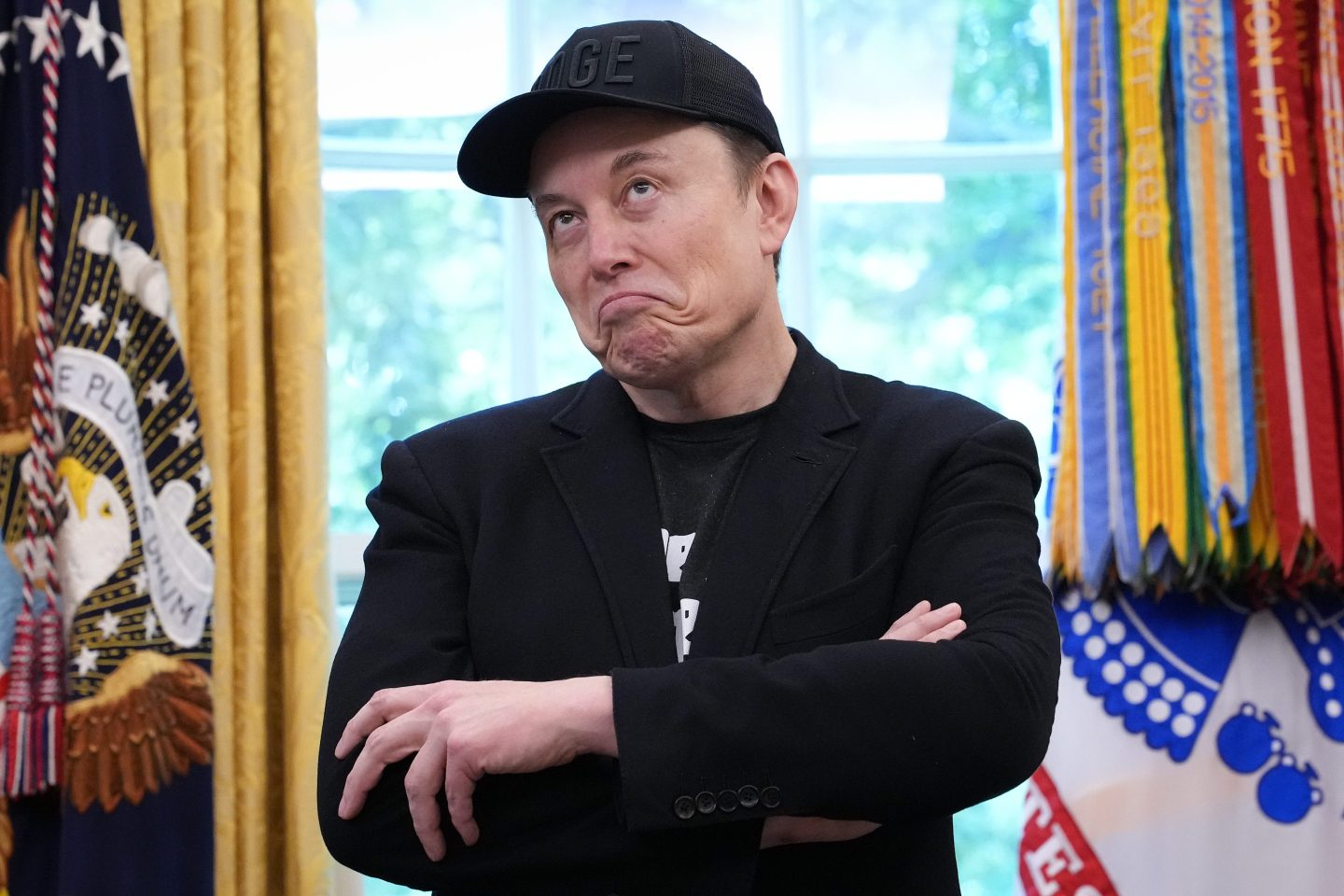For nearly two decades, esteemed economist Nouriel Roubini has worn the nickname “Dr. Doom” with honor. He earned it in the mid-2000s for warning of a housing crash that Wall Street dismissed, until he was proven catastrophically right.
Since then, the NYU Stern School of Business professor emeritus has become one of the most recognizable bears in global finance, regularly sounding alarms about debt spirals, geopolitical shocks, pandemics, AI disruptions, and what he once called “the mother of all crises.”
So it’s perhaps surprising, even disorienting, that in the midst of investors teetering on the edge of a bear market, Roubini is breaking with his cohort—including fellow 2008-financial-crisis-prophet Michael Burry—to dismiss their pessimism about the U.S. economy as misplaced.
In a new essay for the Financial Times, the economist argues that the conventional view—that America’s “Liberation Day” tariffs would trigger stagflation, tank the stock market, kneecap the dollar, and end U.S. exceptionalism—is simply wrong. Instead, he sees something close to the opposite: a short period of cooling growth, followed by a powerful rebound led by technology and capital spending that keeps the U.S. firmly in the top spot.
“The now common view that the U.S. stock market is in a massive bubble and bound to crash is incorrect over the medium term,” he wrote. On the other hand, what he predicted isn’t necessarily the rosiest. The near-term picture looks like a “growth recession,’ he said, meaning slower, below-potential GDP. It’s not the hard landing or 1970s-style stagflation many have predicted, and it isn’t a bubble popping, but it’s a lopsided economy, as many Wall Street analysts have also noticed.
Tariffs won’t topple the recovery
Roubini, who once warned of a “mega-threatened age”—the era where AI, aging populations, and global instability threatened our prosperity—now argues the most extreme fears about tariffs and policy missteps haven’t materialized. That’s partly because, he says, this administration is responsive to market reactions. When asset prices slumped immediately after the tariff announcement, the administration “blinked,” softening policy and opening the door to more conventional trade negotiations.
By next year, he says, growth will reaccelerate. The Fed is undergoing a period of monetary easing, fiscal stimulus is still flowing, and—critically—AI-related capital expenditure continues to surge.
Roubini’s arguments align closely with two of Wall Street’s top analysts: Torsten Slok of Apollo Global Management and Mike Wilson of Morgan Stanley. Slok, known for his “Daily Spark,” combining insightful charts with brevity, argued on Nov. 20 that the economy is “likely to reaccelerate in 2026.” Just days earlier, he had warned of inequality, saying: “It is a K-shaped economy for U.S. consumers.” He has also flagged extreme concentration and valuations in the stock market, with the Magnificent Seven running far ahead of the rest of the market.
Wilson, chief equity strategist for Morgan Stanley, has been predicting a “rolling recession” for years, arguing that different sectors of the economy shrank at different times, resulting in something that felt like a recession, but unevenly distributed. This changed in April 2022, when a “rolling recovery” set in, he has argued since then, forecasting an economic boom ahead. Wilson has argued for the possibility of a correction in stocks but, like Roubini, does not see a crash as imminent.
Tech > tariffs
The core of Roubini’s argument rests on a simple hierarchy: Tariffs and policy noise are temporary, but technological leadership that results in innovation compounding over decades is not.
“Tech trumps tariffs,” he writes.
He estimates U.S. potential growth could double from 2% to 4% by the end of the decade, powered by innovation in AI and machine learning, robotics, quantum computing, commercial space, and defense technology. While this agrees with many Wall Street predictions (Goldman Sachs sees real potential growth reaching 2.3% in the early 2030s, for instance), the prediction of 4% blows most others out of the water.
However, those industries, Roubini argues, will continue to deliver the “exceptionalism” that has set the U.S. apart for the past 20 years—to the extent that productivity will boost the economy by double digits.
If potential growth rises, he says, equity returns should, too. When growth averaged only 2% over the past two decades, annual returns still hovered in the double digits. Faster growth means even faster earnings expansion, and valuations that look elevated today may be supported rather than speculative.
Roubini has been striking a more positive tone for about a year now—in August 2024, while everyone feared a downturn was coming and grew frustrated that the Fed wouldn’t ease, he calmed market fears again.
Debt—and the dollar—look less dangerous than feared
One of the most persistent fears around AI-driven spending is debt sustainability. But Roubini argues that this math would change if growth rises even modestly.
The Congressional Budget Office projects debt-to-GDP soaring under 1.6% real growth assumptions. But if growth averages 2.3% or higher, the ratio stabilizes. At 3% or more, it falls, meaning that we could potentially grow ourselves out of debt; an argument President Donald Trump has also used.
A tech-driven “supply shock” could also push inflation lower over time as production costs drop while productivity booms, meaning higher real rates may not translate into higher nominal yields. Even external liabilities look manageable, he argues, because rising tech investment tends to attract foreign equity inflows, similar to how “emerging-market” economies finance growth during a resource boom.
Roubini also dismisses the widely discussed decline of the dollar, since he believes that the U.S. will accelerate while Europe stagnates, and thus the dollar will ultimately strengthen.
Notably, “Dr. Doom” admitted that the U.S.’s top adversary, China, is at least on par with the U.S. in innovating in the “most important industries of the future,” such as AI and robotics. However, he doesn’t seem too concerned with the AI arms race.
“The U.S. economy and markets are best positioned among advanced economies,” Roubini wrote. “They will continue to benefit from the U.S. being the most innovative advanced country.”












